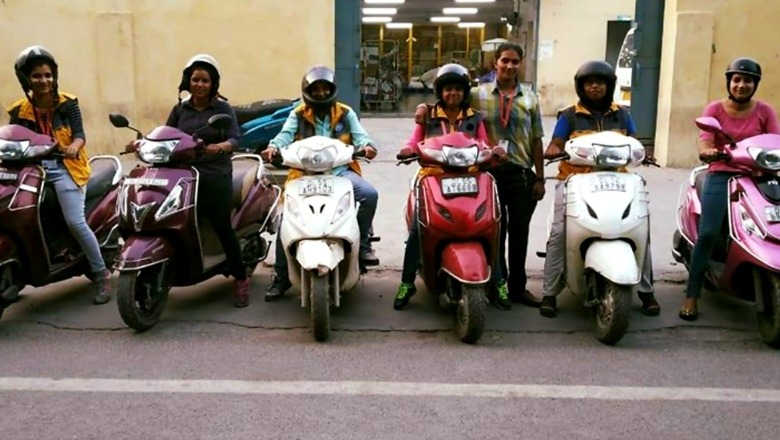
views
With the onset of Covid-19, the precarity over employment among women in India has been at its highest. A report by Azim Premji University found that over 47% of women workers during the second wave were left redundant with no work opportunities. Many such women were confined to gendered and unskilled roles that restrict them from work opportunities. According to the report, only 7% of men had no opportunities and were able to shift jobs or work independently.
The obvious solution lies in the inclusion of women in sectors which have traditionally not offered roles to women but, with changes in technology, can now employ women. One such sector is logistics and transport where motorisation offers women a level playing field. There have been challenges that have historically worked against women employees in logistics and transport. It can be argued that logistics involves lifting heavy goods, long and late working hours, the potential for sexual harassment as they have to work in a predominantly male populated workforce and delivery points.
Traditionally, the entire arena of logistics has used muscle power for packing, lifting and delivering. However, much of that has changed or is changing. From motorised battery-operated lightweight e-rickshaws and application-based cab networks to a very large requirement for delivery agents who move smaller packages between points or drive four-wheel vehicles, women can now take on jobs in this sector.
Today, most logistic companies employ a high degree of automation to take care of packaging, sorting, transporting within premises. From forklifts to conveyor belts, and from golf carts with attached trolleys to robots, women can take on more operational roles as well as management roles in logistics.
Still, despite the large potential, women’s participation in logistics and transport has been at a snail’s pace. In India, only 20% of women are employed in the logistics sector. Further, only one per cent of commercial driving licenses are owned by women (MoRTH, 2018). The highest entry barrier for women in the sector has been a lack of skills and training that enables women to work. Both logistics and transport sectors require basic driving or riding skills. The major intervention for women can come through a sense of enablement, the ability of women to drive or ride. Adequate training support can help women travel at ease while at the same time providing livelihood opportunities in logistics and transport. Third-party training providers, for instance, could become part of logistics and transport companies, to train women to drive three or two-wheelers.
Financial security is another barrier to entry for women in logistics or transport. Since logistics and transport require a vehicle, women often lack the resources to buy one. They often have to rely on informal and high-cost sources to finance their vehicle. Formalisation of financial support can come by inducting Non- Banking Financial Companies (NBFCs) that can help finance vehicles purchased by women for commercial purposes. Increasingly, enterprises are putting in place work practices that are enabling women to start taking on these jobs in the logistics and transport sector. These include allowing flexible working hours, putting up mobile CCTV cameras, providing 24/7 support systems and automated route planning that enables women to take better routes.
However, a lot more needs to be done to enable women to move into roles in transport and logistics. For instance, more secure roads, high-quality public washrooms and facilities, quicker access to on-road assistance are essential parts of the overall ecosystem that would be needed to get over concerns on comfort and safety.
The positive impact on society of women taking on roles in transport and logistics can be gauged from the fact that over 2 million Indian women walk 2-5 kilometres to work every day. Women have restricted access to mobility due to a lack of resources and safety concerns. While men have the choice to commute by motorbikes or bicycles, women have no choice but to walk every day. Consequently, lack of mobility impacts their social, economic and educational outcomes. With a greater sense of safety with women drivers, women are more likely to venture beyond their immediate neighbourhood to benefit from better job opportunities.
With the logistics and transport sector getting more motorised and automated there are more opportunities for women. The transition from ‘capacity to capability’ of women in logistics and transport will come through aggregating demand for women employees and with adequate skill development. With an inclusive and diverse ecosystem, women can become a resilient part of India’s growing workforce and contribute to the growth of the Indian economy.
Yogesh Kumar is the founder of Even Cargo, a logistics startup that only works with women drivers. The views expressed in this article are those of the author and do not represent the stand of this publication.
Read all the Latest Opinion News and Breaking News here

















Comments
0 comment